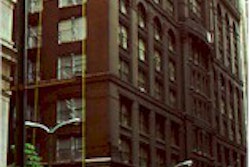CHICAGO – Full-field digital mammography (FFDM) stands up well to conventional analog mammography, according to results presented at this week’s RSNA conference. Several studies presented on Sunday found FFDM to be at least equivalent to screen-film mammography in many applications, and superior to analog for some types of breast imaging.
Mammography advocates have been awaiting clinical results on FFDM since early this year, when GE Medical Systems launched the first full-field system, Senographe 2000D, on the U.S. market. Most of the Sunday’s presentations compared the GE system to conventional mammography units.
In the first presentation, Dr. John Lewin of the University of Colorado compared a prototype version of Senographe 2000D to a conventional screen-film system, with the goal of comparing the performance of both systems in screening applications.
Over the past 30 months, researchers conducted 6,768 exams of women age 40 and over at the University of Colorado and the University of Massachusetts. Two views of each breast were acquired with each modality, and the results were interpreted independently. Of the exams, 183 exams were sent on for biopsy, and 51 cancers were discovered.
Lewin’s group found a significant difference in the recall rates between FFDM and screen-film mammography: 11.9% of FFDM studies (469 exams) were recalled, compared to 15% of analog studies (679 exams). As might be expected, screen-film also generated more biopsies, Lewin said.
There were also differences in the results of biopsies between the two techniques. Benign findings were more likely to be the result of a callback on film, while high-risk findings were more likely the result of a callback on digital.
Nine cancers were detected only with the FFDM system, 16 were detected only with screen-film, 18 were detected with both modalities, and there were eight cancers that were not detected with either modality but became palpable in a year.
Lewin concluded by stating that there were no major differences in cancer detection between the two systems, while digital had significantly fewer recalls, leading to fewer biopsies.
In another study also presented by Lewin, the Colorado/Massachusetts group looked at possible reasons why FFDM and screen-film images were interpreted differently by radiologists. The group described such discordant readings as those in which a finding was recalled for work-up on one modality but not on the other.
Two radiologists evaluated discordant readings side-by-side, assigned each image a conspicuity rating, and chose the reason for the discordance from one of 32 options. The group found 1,750 discordant findings, 690 on digital and 1,060 on film. There were discordant readings in 25 cases in which cancer was found, Lewin said.
By far the most common reason for discordant findings were differences in visibility, most commonly due to what the group called fortuitous positioning. In one case, for example, overlapping tissue looked like a mass on screen-film mammography, while on the FFDM image the tissue didn’t overlap as much, and therefore wasn’t classified as suspicious. The group found differences due to reader variability in about a third of the cases.
Another study, presented by Dr. Luz Venta of the University of Texas Medical Center, examined whether digital mammography can reduce the number of views needed to evaluate microcalcifications.
The Texas researchers also used a Senographe 2000D, and compared its performance to that of several different analog mammography systems. The group found that using the digital system for diagnostic work-up can reduce the number of views needed to evaluate breast calcifications, Venta said.
A Dutch/German group studied the economic implications of digital mammography by discussing the bottleneck issues that can be caused by large image files. The group developed a soft-copy reading system that is both affordable and has the high throughput necessary for screening facilities, in which radiologists must read over 100 studies an hour.
A Canadian group found that the amount of time it takes to read FFDM images is significantly longer than that required for screen-film studies, but the extra amount of time it can take to load hard-copy film nullifies the advantage. The average soft-copy image took 32.8 seconds to read, compared with 20.3 seconds for screen-film, but the average film took 13.1 seconds to load.
FFDM’s progress was illustrated in the question-and-answer session for one of the presentations, when the University of Colorado’s Lewin was asked to which modality he would refer his wife or family to for a mammogram. “We found no significant difference in cancer detection between the two modalities,” Lewin said. “I consider the two modalities equivalent until further data proves otherwise.”
By Brian Casey
AuntMinnie.com staff writer
November 27, 2000
Mammography advocates have been awaiting clinical results on FFDM since early this year, when GE Medical Systems launched the first full-field system, Senographe 2000D, on the U.S. market. Most of the Sunday’s presentations compared the GE system to conventional mammography units.
In the first presentation, Dr. John Lewin of the University of Colorado compared a prototype version of Senographe 2000D to a conventional screen-film system, with the goal of comparing the performance of both systems in screening applications.
Over the past 30 months, researchers conducted 6,768 exams of women age 40 and over at the University of Colorado and the University of Massachusetts. Two views of each breast were acquired with each modality, and the results were interpreted independently. Of the exams, 183 exams were sent on for biopsy, and 51 cancers were discovered.
Lewin’s group found a significant difference in the recall rates between FFDM and screen-film mammography: 11.9% of FFDM studies (469 exams) were recalled, compared to 15% of analog studies (679 exams). As might be expected, screen-film also generated more biopsies, Lewin said.
There were also differences in the results of biopsies between the two techniques. Benign findings were more likely to be the result of a callback on film, while high-risk findings were more likely the result of a callback on digital.
Nine cancers were detected only with the FFDM system, 16 were detected only with screen-film, 18 were detected with both modalities, and there were eight cancers that were not detected with either modality but became palpable in a year.
Lewin concluded by stating that there were no major differences in cancer detection between the two systems, while digital had significantly fewer recalls, leading to fewer biopsies.
In another study also presented by Lewin, the Colorado/Massachusetts group looked at possible reasons why FFDM and screen-film images were interpreted differently by radiologists. The group described such discordant readings as those in which a finding was recalled for work-up on one modality but not on the other.
Two radiologists evaluated discordant readings side-by-side, assigned each image a conspicuity rating, and chose the reason for the discordance from one of 32 options. The group found 1,750 discordant findings, 690 on digital and 1,060 on film. There were discordant readings in 25 cases in which cancer was found, Lewin said.
By far the most common reason for discordant findings were differences in visibility, most commonly due to what the group called fortuitous positioning. In one case, for example, overlapping tissue looked like a mass on screen-film mammography, while on the FFDM image the tissue didn’t overlap as much, and therefore wasn’t classified as suspicious. The group found differences due to reader variability in about a third of the cases.
Another study, presented by Dr. Luz Venta of the University of Texas Medical Center, examined whether digital mammography can reduce the number of views needed to evaluate microcalcifications.
The Texas researchers also used a Senographe 2000D, and compared its performance to that of several different analog mammography systems. The group found that using the digital system for diagnostic work-up can reduce the number of views needed to evaluate breast calcifications, Venta said.
A Dutch/German group studied the economic implications of digital mammography by discussing the bottleneck issues that can be caused by large image files. The group developed a soft-copy reading system that is both affordable and has the high throughput necessary for screening facilities, in which radiologists must read over 100 studies an hour.
A Canadian group found that the amount of time it takes to read FFDM images is significantly longer than that required for screen-film studies, but the extra amount of time it can take to load hard-copy film nullifies the advantage. The average soft-copy image took 32.8 seconds to read, compared with 20.3 seconds for screen-film, but the average film took 13.1 seconds to load.
FFDM’s progress was illustrated in the question-and-answer session for one of the presentations, when the University of Colorado’s Lewin was asked to which modality he would refer his wife or family to for a mammogram. “We found no significant difference in cancer detection between the two modalities,” Lewin said. “I consider the two modalities equivalent until further data proves otherwise.”
By Brian Casey
AuntMinnie.com staff writer
November 27, 2000
Copyright © 2000 AuntMinnie.com
Click here to view the rest of AuntMinnie’s coverage of the 2000 RSNA conference.
Click here to post your comments about this story.



















